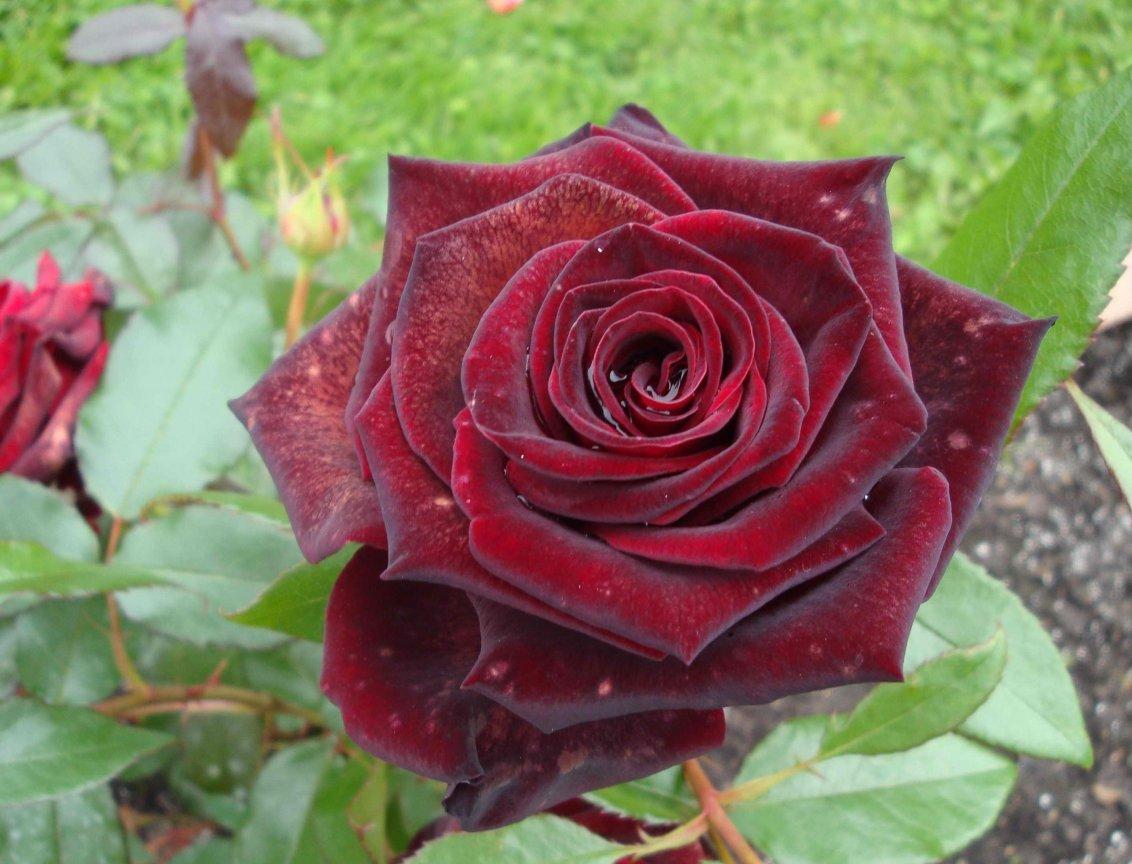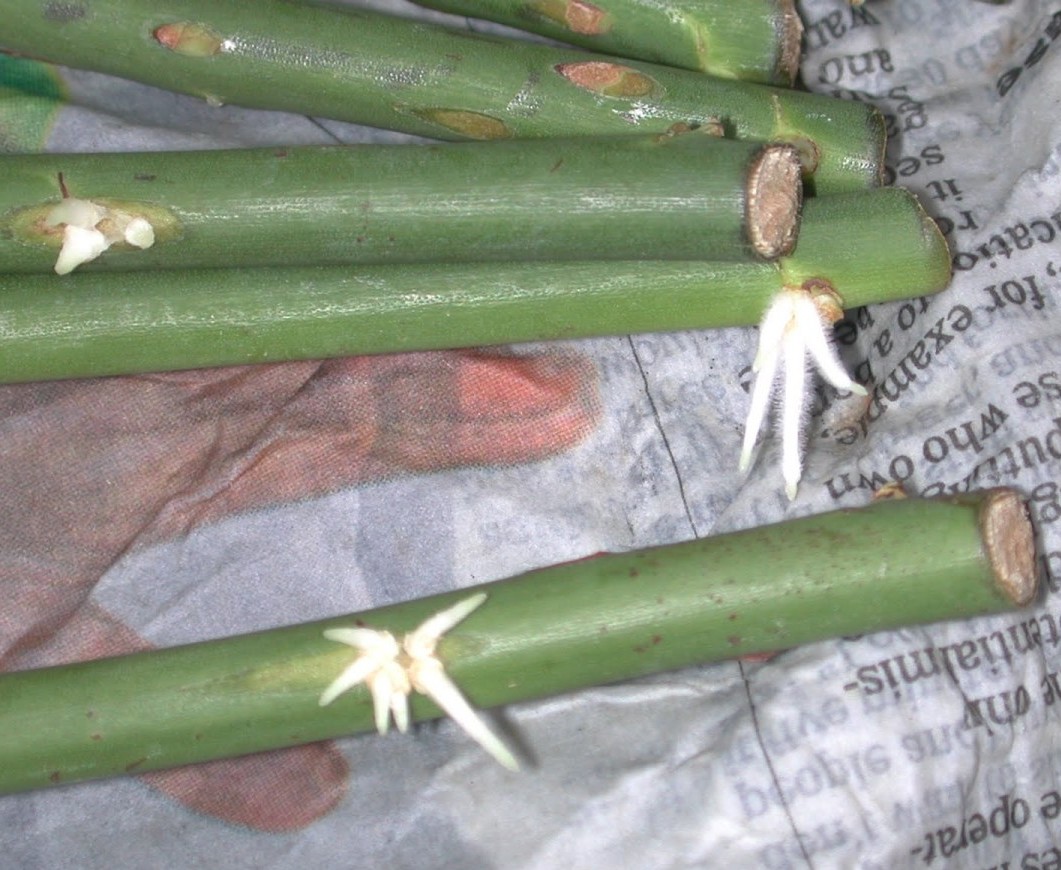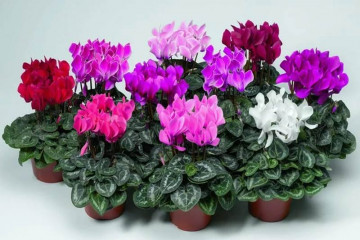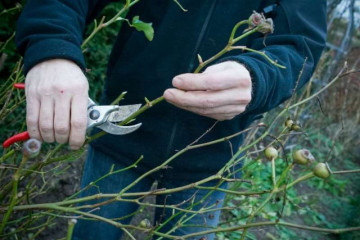How to grow a rose from a cutting at home - germination and planting
Content:
Rose is rightfully considered the queen of all colors. Beautiful, refined, fragrant - she is able to decorate any suburban area. Flower lovers usually buy the first cuttings or take them from friends. But over time, there is a desire to learn how to plant roses on your own. It will be useful to deal with this issue in as much detail as possible.
Growing roses from cuttings at home
In general, there are quite a few ways to breed roses - cuttings, layering, dividing the bush, offspring, and others. But still, most often flower growers prefer to propagate bushes by cuttings in the country. The main advantages of this method are worth listing.
What are the advantages of cuttings
In fact, there are quite a few advantages of growing roses using cuttings. One of them is simplicity. Indeed, it is enough to pinch off a suitable branch to get a beautiful, strong and healthy bush in a couple of years. In addition, this ensures that the new plant retains the full characteristics of its parent.
Also, gardeners appreciate this method for its high speed - the rooted stem will grow and develop quickly. Unlike propagation by layering and offspring, you do not need to spend a lot of time preparing.
Finally, it is completely safe. Still, when dividing the bush, there is a risk of harming the plant and as a result, both parts will die. Cutting off a branch is much easier and even if the cutting dies, the main plant will survive. Therefore, it is not surprising that many people want to know how to grow a rose from a cuttings at home.
How to choose the right stalk
In order for the plant to grow quickly and actively develop, it is very important to prepare cuttings correctly and in a timely manner. The optimal time for this is late October or early November. During this period, the movement of the sap sharply decreases and the plant almost goes into hibernation, but still the branches are still alive and soft, and not hard and fragile, as they will become in winter. By the way, it is at this time that pruning is often carried out, so familiar flower growers may well donate waste, from which it is easy to get new bushes.
It is advisable to give preference to strong, young branches about 4-5 mm thick and 20-30 cm long. They must have developed buds - at least 3-5 pieces. In the upper part, it is advisable to make the cut straight so that less moisture is lost. But from below, the cut must be made oblique. This increases the area and makes germination easier. In addition, it allows you to understand where which side is and not to plant the plant upside down.
Preparing cuttings for planting
Planting cuttings immediately after harvesting is not worth it - it is better to do it in the spring. But it is very important to keep them alive throughout the winter. This is a simple stage, but figuring out how to plant roses without knowing it will not work.
The easiest way is to wrap the cuttings in a thick cloth and place them in the freezer. The right humidity and temperature will ensure that the cutting will easily endure for several months.And due to the absence of drafts, it will definitely not dry out and die. In this state, the pruned branches can be easily preserved until spring.
How to root, when is it best to do it
Around the beginning to mid-March, successfully overwintered cuttings must be removed from the freezer, allowed to warm to room temperature - about a day. Never put it on the stove, radiators or other warm places to speed up the process.
Now you need to root the cuttings. And this can be done in different ways. It will be useful to talk about each of them so that a novice florist can choose the option that suits him.
In a pot
Quite a simple and reliable way. A small pot is filled with fertile light soil. A mixture of black soil, humus and sand is suitable. The soil is moistened and the stalk is simply gently stuck into it. The lower bud should be in the soil. After that, the earth around is lightly tamped with your fingers. To prevent the cutting from drying out before it has roots, it must be closed on top with a cut plastic bottle or put into a plastic bag together with the pot - this creates an optimal microclimate.
In this state, the cutting should be kept for several weeks. The optimum temperature is + 22-25 degrees Celsius. Soon the buds will swell and open, tiny leaves will appear, therefore, the stalk has successfully rooted. After that, it must be protected from direct sunlight and sprayed with a spray bottle once or twice a day.
In water
Quite a simple and reliable way, suitable if there is no land at home. The stalk is simply lowered into the water and removed to a warm place, away from direct sunlight. You can add a little root growth stimulant, then after 10-12 days the cutting will give the first roots and it can be planted in the chosen place.
In the package
But this is a more unusual method, although it is similar to the very first one. Here, instead of a pot, a regular plastic bag is used. The main thing is that it is transparent and strong enough. Earth is poured into it, into which the cutting is slightly buried. After that, the bag is inflated and tied from above. It is quite easy to germinate a rose in this way - after a couple of weeks, the first leaves will appear on a seemingly lifeless branch.
In potato tubers
But for novice growers who are interested in growing roses from cuttings in a secret and quick way, we can recommend such an unusual option as growing in potatoes.
There is nothing complicated here: with the help of a knife or a thick nail in a large tuber, a hole of a suitable diameter is made with a depth of about 4-5 cm. Then you need to leave the structure in a dark place. The potato will provide the cutting with moisture as well as nutrients, so it will develop especially quickly. Some experts even argue that with such rooting, the seedling will be sick much less often.
Burrito method
Another interesting and unusual method for growing healthy and strong seedlings. Moreover, it is very simple and does not require any special tools. In fact, besides the cutting, you only need an old newspaper, some water and a plastic bag.
The newspaper is abundantly wetted, after which a stalk or several is laid on it. The paper is rolled up and put into a bag so that it does not dry out. For 2-3 weeks, you can forget about the cuttings, leaving them in a warm, dark place. After that, they need to be taken out and examined. If the roots appear 1-2 cm long, then the seedlings can be immediately planted in the ground.If they are not there yet or they are too short, the paper should be slightly moistened again and the procedure repeated.
How to plant a rose stalk correctly
The next stage is planting in the ground. However, if the cuttings of a rose took place in the fall and a simple method of propagation in a pot was chosen, then the plant can simply be left there, providing it with appropriate care, that is, a sufficient amount of light, regular watering and spraying.
If the grower chose another option, then 2-3 weeks after the start of germination, the plants must be planted in the ground. Store-bought is best suited - nutritious, light. But you can do it yourself by mixing sand, black soil and compost in equal proportions.
A hole is dug in the pot a little larger than the root system of the seedling. The plant goes down there and the hole is filled with soil. This must be done carefully so that the roots are not damaged and quickly begin to take root in a new place.
Transplanting a rooted rose to a permanent place
However, it is not enough to germinate the cuttings. To successfully propagate a rose, they also need to be properly planted in the garden. This is best done in late spring or early summer. A cloudy May or June day is perfect.
In the selected place, you need to dig a hole about 25x25x25 cm in size.At the bottom, you can lay crushed stone, gravel, expanded clay or broken brick. Thanks to this, excess moisture will be quickly removed, and the root system will be able to develop better. The soil in the pot is abundantly moistened and the rose is removed with it, after which it is lowered into the hole. Moreover, you need to plant not evenly, but at an angle of about 45 degrees to the ground. It remains only to sprinkle with prepared soil and water the rose abundantly.
Rose care after planting
The rose does not need special care after planting in open ground. Only in dry summers should it be watered at least twice a week. In addition, it is advisable to make phosphorus supplements. Thanks to them, the root system will develop more actively and the flower will grow as healthy and strong as possible.
But potash and nitrogen fertilizing are contraindicated. If a large number of leaves and buds appear on the bush, the rose that did not have time to get stronger may well get sick.
Problems of growing roses by cuttings
In general, no difficulties usually arise here. The main thing is to provide suitable care, as well as find the right place. The site must meet certain requirements:
- Protected from strong winds, especially from the north. It is advisable to plant bush roses on the south side of the house or other buildings.
- Do not be located in a lowland - in the spring, cold melt water will accumulate here, which can cause serious harm to roses.
- Abundance of sunlight - the rose does not grow well in shaded areas. The branches are strongly elongated, the number of flowers and leaves is reduced. However, there are exceptions. Varieties with dark flowers (burgundy, purple) are best planted in partial shade, otherwise they can get sick from excess heat.
If you take these rules into account when choosing a place for roses, then, for sure, there will be no problems in the future.
As the reader was convinced, even a novice florist can easily grow gorgeous rose bushes. To do this, you just need to make a little effort and follow the step-by-step instructions given above.




















